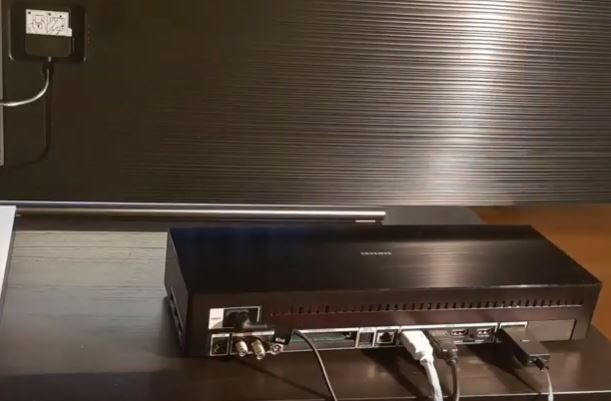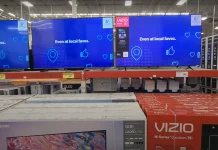8K TVs have become a popular trend in recent years, and while they offer impressive features such as ultra-high resolution screens and advanced surround sound, many customers are unaware of the imperfections hidden behind the marketing. The push for 8K displays in 2020 focuses on showcasing the best of these technologies, but the truth is that these TVs aren’t without their flaws. In this article, we’ll delve into the details and explore the reality of 8K TVs.
Samsung Q800T, Q900T, Q950T: A Comparison of 2020’s 8K Models
In 2020, Samsung introduced new 8K TVs in their eighth series, including the Q800T model. Previously, the 9th series only included models such as the Q900T and Q950T, which were renamed as Q900TS and Q950TS. Although the “S” designation typically marks a new generation, it seems that in 2020, Samsung may have used it as a marketing tool to highlight the superior features of their Q950TS model. A more detailed breakdown of the specifications is provided in the table at the end of this article.
| Q800T | Q900T | Q950T | |
| screen | |||
| Screen Size | 65, 75, 82 | 65, 75, 85 | 65, 75, 85 |
| Style | Flat Panel | Flat Panel | Flat Panel |
| Resolution | 7680 x 4320 | 7680 x 4320 | 7680 x 4320 |
| screen bit | 10bit | 10bit | 10bit |
| type screnn | 8K | 8K | 8K |
| screen technology | MVA | MVA | MVA |
| Backlighting | Direct Full Array 24X (82′ 32X) | Direct Full Array 32X | Direct Full Array 32X |
| Dimming Technology | Ultimate 8K Dimming | Ultimate 8K Dimming | Ultimate 8K Dimming |
| Stand Type (Color) | Bending Plate (Titan Black) | Floating Delta (Slate Black) | Floating Delta (Slate Black) |
| Bezel Width | 4 Bezel-less | Ultra Slim Look | Ultra Slim Look |
| Video | |||
| Motion Rate | 240 | 240 | 240 |
| refresh rate | 120 | 120 | 120 |
| PQI | not used | 4700 | |
| Color | 100% Color Volume with Quantum Dot | 100% Color Volume with Quantum Dot | 100% Color Volume with Quantum Dot |
| HDR (High-Dynamic Range) | Quantum HDR 16X | Quantum HDR 32X | Quantum HDR 32X |
| Picture Engine | Quantum Processor 8K | Quantum Processor 8K | Quantum Processor 8K |
| Processor Brand | ? | MediaTek | MediaTek |
| CPU | ? | Cortex-A73 4core | Cortex-A73 4core |
| GPU | ? | Mali-G52 | Mali-G52 |
| Audio | |||
| Dolby | Yes | Yes | Yes |
| Sound Output | 60W | 70W | 70W |
| Woofer | Yes 2 pics | Yes 2pics | Yes 2pics |
| Speaker Type | 4.2CH | 4.2.2CH | 4.2.2CH |
| Active Voice Amplifier | Yes | Yes | Yes |
| Object Tracking Sound+ | Yes | Yes | Yes |
| Q-Symphony | Yes | Yes | Yes |
| Multiroom Link | Yes | Yes | Yes |
| Features | |||
| OS | Tizen 5.5 | Tizen 5.5 | Tizen 5.5 |
| Wi-Fi | Yes Wifi 5 | Yes Wifi 5 | Yes Wifi 5 |
| Bluetooth | Yes (ver.4.2) | Yes (ver.4.2) | Yes (ver.4.2) |
| Smart Hub | Yes (incl. Universal Guide and TV Plus) | Yes (incl. Universal Guide and TV Plus) | Yes (incl. Universal Guide and TV Plus) |
| Bixby | Yes | Yes | Yes |
| Digital Clean View | Yes | Yes | Yes |
| Ultra Black | No | No | No |
| ConnectShare | Yes | Yes | Yes |
| Closed Captioning | Yes | Yes | Yes |
| Game Mode | Yes | Yes | Yes |
| Eco Sensor | Yes | Yes | Yes |
| Mobile to TV – Mirroring, DLNA | Yes | Yes | Yes |
| TV to Mobile – Mirroring | Yes | Yes | Yes |
| Google Assistant | Yes | Yes | Yes |
| Alexa | Yes | Yes | Yes |
| AirPlay 2 | No | No | No |
| Auto Channel Search | Yes | Yes | Yes |
| InstaPort S (HDMI Quick Switch) | Yes | Yes | Yes |
| Channel Guide | Yes | Yes | Yes |
| Ambient Mode | Yes | Yes | Yes |
| Auto Power Off | Yes | Yes | Yes |
| AI Technology | Yes | Yes | Yes |
| Apps Platform | Smart TV Powered by TIZEN with Bixby Voice, Apps and Full Web Browser | Smart TV Powered by TIZEN with Bixby Voice, Apps and Full Web Browser | Smart TV Powered by TIZEN with Bixby Voice, Apps and Full Web Browser |
| Auto Motion Plus | Yes | Yes | Yes |
| Embedded POP | Yes | Yes | Yes |
| Anynet+ (HDMI-CEC) | Yes | Yes | Yes |
| V-Chip | No | Yes | No |
| USB HID Support | Yes | Yes | Yes |
| AI Upscale | 8K AI Upscaling | 8K AI Upscaling | 8K AI Upscaling |
| Easy Pairing | No | No | No |
| Inputs & Outputs | |||
| HDMI | 4 (3 ver. 2.0), (1 ver.2.1) | 4 (3 ver. 2.0), (1 ver.2.1) | 4 (3 ver. 2.0), (1 ver.2.1) |
| USB | 4 (ver 2.0) | 2 (ver 2.0) | 3 (ver 2.0) |
| Ethernet | Yes 100Mb/s | Yes 100Mb/s | Yes 100Mb/s |
| RF In (Terrestrial/Cable | Yes | Yes | Yes |
| RF In (Satellite Input) | No US, Yes Europe | No US, Yes Europe | No US, Yes Europe |
| Digital Audio Out (Optical)Yes | Yes | Yes | Yes |
| Audio Return Channel Support | Yes | Yes | Yes |
| eARC | Yes | No | Yes |
| One Connect | Yes | Yes | Yes |
| Samsung OneRemote | Yes | Yes | Yes |
| Digital Broadcasting US | ATSC/ClearQAM | ATSC/ClearQAM | ATSC/ClearQAM |
| Digital Broadcasting Europe | DVB T/T2/C/S/S3 | DVB T/T2/C/S/S2 | DVB T/T2/C/S/S2 |
| Analog Tuner | Yes | Yes | Yes |
| Accessories | |||
| Remote control | QLED Premium Smart Remote TM2090C Europe, TM2050C US | QLED Premium Smart Remote TM2050C | QLED Premium Smart Remote TM2090C Europe, TM2050C US |
| Samsung OneRemote | Yes | Yes | Yes |
Key Differences Between Samsung 8K Models: Q800T, Q900T, and Q950T
Design of Samsung 8K TVs (2020)
The design across all the models is essentially the same. However, prospective buyers should know that Samsung’s 8K TVs consist of two main components: the screen with speakers and a separate unit containing the processor and ports. This unique configuration is referred to as the “One Connect” system. While some may consider this a revolutionary idea, it primarily serves to lower repair and maintenance costs for the company, as it isolates the processor and ports in a separate unit.
Screens in Q800T, Q900T, and Q950T
The screens in all three models are nearly identical, with the Q800T offering an 82-inch variant, while the Q900T and Q950T feature a larger 85-inch screen. All the models use Quantum Dot technology with 8K resolution, direct backlighting, and 10-bit color depth. Essentially, the screens across all 8K TVs in the 2020 lineup are the same, providing impressive picture quality and color accuracy.
Video Performance on Q800T, Q900T, and Q950T
These models support 120 frames per second, offering smooth motion for video content. In the United States, an additional Motion Rate parameter is used, which is essentially twice the actual frame rate. In other regions, the PQI (Picture Quality Index) is used, but it’s often an abstract measurement. In terms of performance, the processors across the Q800T, Q900T, and Q950T are similar, providing average processing power that is sufficient for 8K content.
Audio in Q800T, Q900T, and Q950T
Audio has become one of the key trends of 2020, with all three models incorporating cutting-edge technologies for enhanced sound. These technologies include:
- Active Voice Amplifier: Boosts dialogue clarity by adjusting the volume based on background noise.
- Object Tracking Sound+: Tracks moving objects on screen and synchronizes audio to match the motion.
- Q-Symphony: Allows the TV to work seamlessly with compatible Samsung soundbars for a richer, more immersive audio experience.
These models feature multiple speakers located not just at the bottom of the screen, but also on the sides and top, providing a more dynamic and surround-like sound experience. To fully appreciate these audio technologies, however, users will need a high-quality 5.1 or 7.1 surround sound system.
Ports on Q800T, Q900T, and Q950T

The port configuration on all three models is fairly standard. The key feature here is a single HDMI 2.1 port, which enables the transfer of 8K video signals to the TV and allows for synchronization with game consoles for a better gaming experience. While Samsung has stopped detailing the exact port types in their specifications, it’s likely due to the fact that some of the new standards are not yet fully functional.





